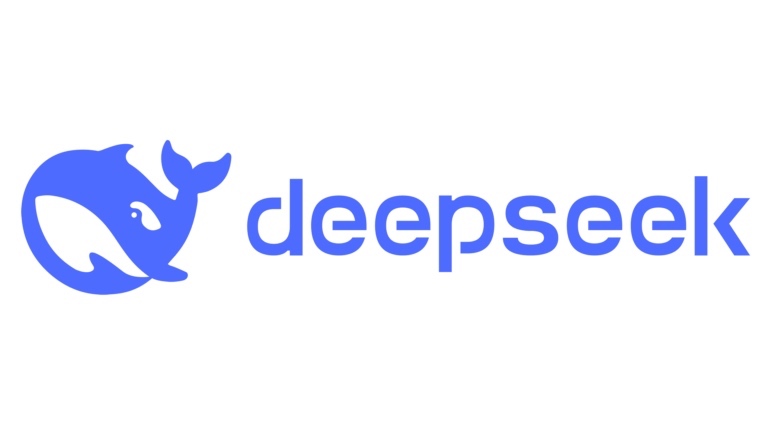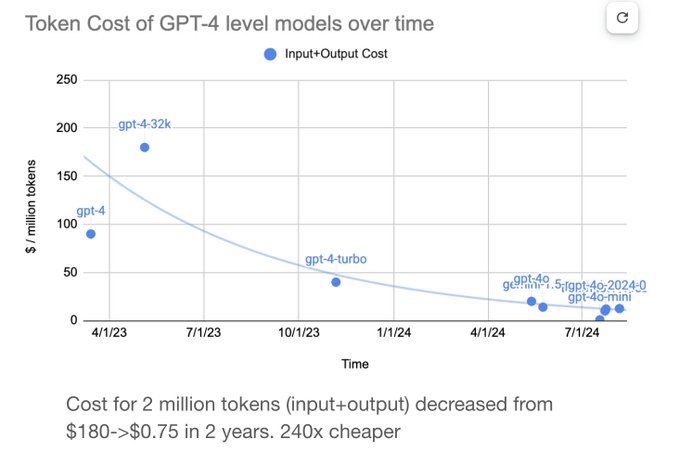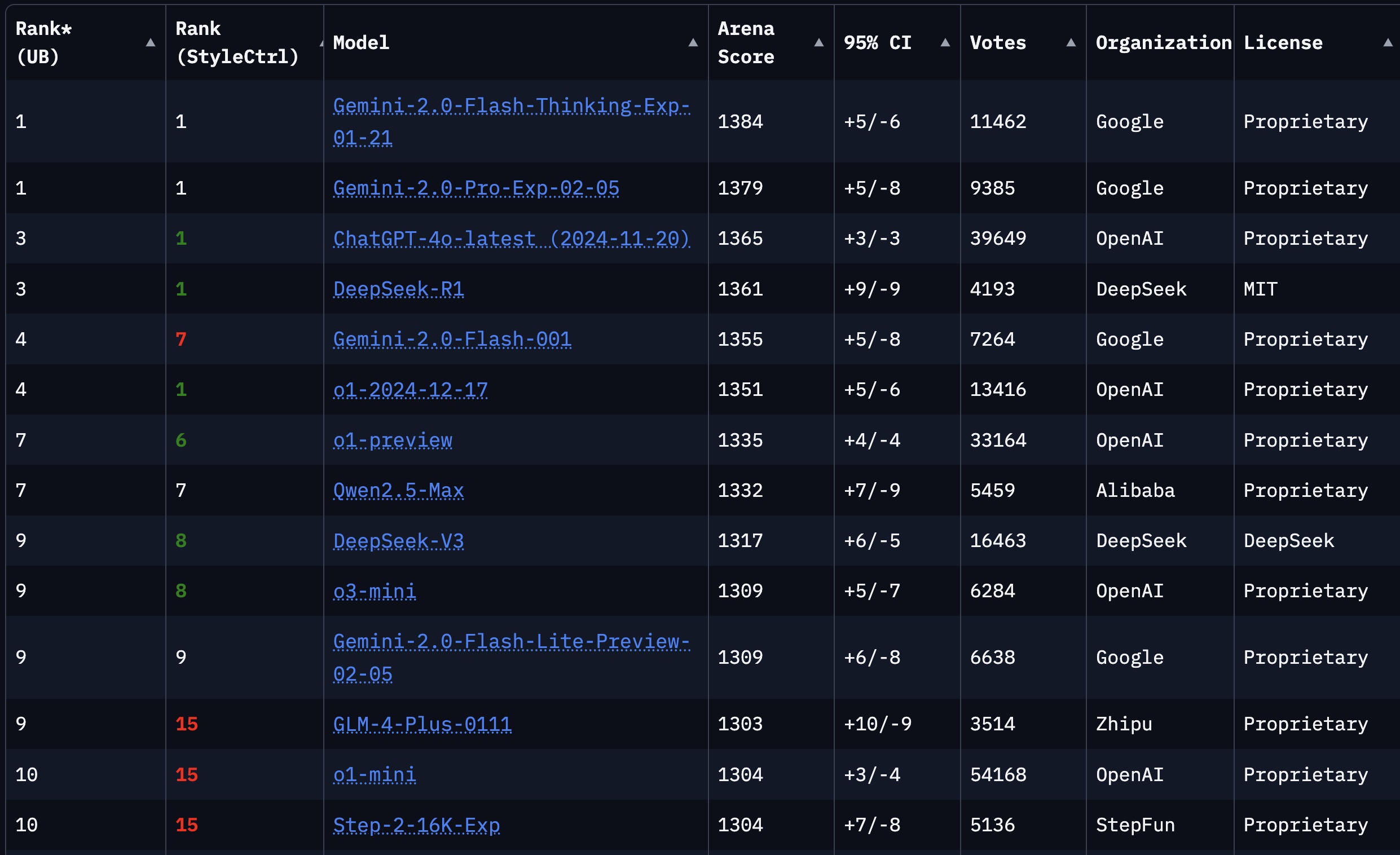DeepSeek: Pioneer of Technology Democratization or Disruptor?
Introduction
"The best way to predict the future is to create it." —— Peter Drucker
In 2022, OpenAI's ChatGPT burst onto the scene with unprecedented intelligence levels, instantly igniting global enthusiasm for artificial intelligence technology. This technological wave triggered by large language models (LLMs) was like a "technological explosion," not only amazing the public with AI's potential but also profoundly changing our understanding of future technological development directions. Since then, tech giants have joined the battle, competing to launch more powerful and economical AI models, trying to occupy leading positions in this race. The continuous reduction of costs and constant improvement of performance seemed to herald an accessible AI era within reach.

However, when we focus on the core of this technological feast—large language models themselves—we discover an interesting phenomenon: although there are many participants, only DeepSeek seems to truly deserve the title "phenomenal." This company, dubbed the "AI world's Pinduoduo," has rapidly sparked global discussion with its astonishing low costs and open-source strategy, even being viewed by some as a pioneer of "technology democratization." So, is DeepSeek's explosive popularity merely due to price advantages? Can it really shake the existing AI landscape and become a representative of disruptive innovation? Or is it merely a disruptor in the competitive landscape of tech giants? This article will delve into the deep reasons behind the DeepSeek phenomenon, analyze the real drivers of its rapid rise in the global AI field, and the insights it brings to the entire industry.
The Innovator's Dilemma
Business scholar Clayton Christensen mentioned in his 1997 book "The Innovator's Dilemma": "Disruptive innovation is not accidental, but an inevitable result of market and technological development." Since OpenAI released ChatGPT in 2022, the public has for the first time been so close to intelligent chatbots based on large language models, seemingly like a "technological explosion." While marveling at their intelligence, it has also sparked widespread interest in AI technology development throughout society. As major AI giants like Google, Meta, Microsoft entered the arena, industry leaders continuously developed more powerful AI models while constantly reducing marginal costs, trying to gain sustained advantages in competition. For example, OpenAI's GPT-4 series models have become increasingly cheaper over time (as shown in the chart below, unit costs dropped to 1/240th over 2 years), while performance has continuously improved. This is the inevitable trend of marginal cost reduction brought by technological development.

Recently, with the entry of DeepSeek, dubbed the "AI world's Pinduoduo," this cost has been further dramatically reduced, far below OpenAI's. DeepSeek V3 model costs only one-twentieth of the equivalent OpenAI 4o model, and the R1 model is astonishingly low at about one-tenth of OpenAI's o3-mini! This price gap can only be described as "shocking." If OpenAI's models are compared to luxury cars, DeepSeek's models are like economy cars—while there may be performance differences, the price advantage is enough to attract a broader user base.
| Model | Input Cost (per million tokens) | Output Cost (per million tokens) | Notes |
|---|---|---|---|
| OpenAI o3-mini | $1.10 | $4.40 | Latest reasoning model, improved performance, still expensive |
| OpenAI o1 | $15 (uncached)/$7.5 (cached) | $60 | Flagship model, suitable for high-end scenarios |
| OpenAI GPT-4o | $2.5 (uncached)/$1.25 (cached) | $10 | Suitable for complex tasks, medium cost-effectiveness |
| DeepSeek V3 | $0.14 (uncached)/$0.014 (cached) | $0.28 | High performance, low cost, extremely high cost-effectiveness |
| DeepSeek-R1 | $0.14 (uncached)/$0.55 (cached) | $2.19 | Open-source model, price only 2%-3.6% of OpenAI's |
So, can DeepSeek, which has taken the world by storm and driven costs so low, be called the "disruptive innovation" mentioned in "The Innovator's Dilemma"? Unfortunately, if we only look at model performance, it's still too early to completely define DeepSeek as a disruptive innovation in terms of performance. According to professional evaluations, DeepSeek's reasoning model R1 is not much different from OpenAI's o1 model, and hasn't even surpassed ChatGPT-4o (as shown in the chart below). Apart from price advantages, DeepSeek doesn't seem to have any significant competitive advantages over other mainstream large language models. Additionally, DeepSeek's R1 reasoning model isn't unique to them—it was originally developed by OpenAI (o1 series). Moreover, all major mainstream AI companies are now following up with reasoning models, such as Google's Gemini 2.0 Flash Thinking and OpenAI's o3-mini. However, we cannot ignore that DeepSeek's open-source and extremely low-cost reasoning model is itself an innovation. The emergence of reasoning models has improved efficiency, while DeepSeek's open-source strategy has made these technological benefits accessible to a broader audience.

So, what exactly makes DeepSeek a phenomenal popular large language model in the global AI field?
Technology Democratization
I believe that DeepSeek's explosive popularity is closely related to its open strategy, which directly leads to technology democratization. Technology democratization means that advanced technology is no longer monopolized by a few giants, but spreads to broader social groups with lower barriers and costs, ultimately improving overall social welfare. It usually means lower costs, usage barriers, and higher penetration rates and social value.
First, from the LLM Arena chart above, we can see that most top-ranking large language models (such as Google's, OpenAI's, and even Alibaba's LLMs) are closed-source, meaning they likely charge fees; only DeepSeek uses an open-source license, and it's the almost unrestricted MIT open-source license, giving everyone the opportunity to build their own reasoning models. This open-source license dramatically lowers technical barriers, enabling small and medium enterprises, research institutions, and even individual developers to participate in AI technology innovation and application. Second, DeepSeek didn't hide anything when releasing V3 and R1 models—not only did they open-source model weights, but they also detailed model training through technical papers, allowing numerous domestic and international researchers to quickly replicate or deploy R1-based reasoning models. Any enterprise or researcher can quickly deploy and use R1, which undoubtedly greatly lowers the barrier to researching and using reasoning models, benefiting the entire AI industry's development. Third, DeepSeek made many technical innovations under hardware resource constraints, dramatically reducing model training costs and providing very affordable API services, allowing many application developers to quickly integrate powerful large language reasoning models, benefiting the entire AI ecosystem's development. Low-cost API services further reduce AI application development costs, enabling more developers to afford advanced AI technology and accelerating AI application adoption.
Historical Inevitability
DeepSeek's open strategy forms a historical echo with Microsoft's path in the PC era. In the 1980s, when Apple insisted on a closed software-hardware ecosystem, Microsoft chose to open the Windows system and license it to major hardware manufacturers, directly spawning the compatible machine market and making personal computers drop from luxury items to mass consumer products. Back then, Apple's insistence on a closed software-hardware ecosystem resulted in expensive Mac computers that were difficult to popularize. Microsoft opened the Windows system, licensing it to hardware manufacturers like Compaq and Dell, quickly spawning a massive compatible machine market. Compatible machines not only dramatically reduced prices but also offered richer hardware choices, quickly capturing the market and ultimately making PCs truly enter thousands of households. Statistics show that global PC penetration increased by 800% from 1985-1995, with 70% of that growth coming from the compatible machine market! This technology democratization not only changed the industry landscape but reshaped humanity's informatization process.
In the AI era, open source is re-enacting this revolution. DeepSeek's MIT licensing model has special significance: compared to "infectious" agreements like GPL, MIT allows commercial closed-source secondary development, actually constructing a "open-source-commercialization" positive cycle. The brilliance of MIT licensing lies in encouraging open-source sharing while allowing commercial closed-source secondary development. This "open-source but not excluding commercial" model cleverly constructs an 'open-source - commercialization' positive cycle. Open-source community contributions accelerate technological iteration, while commercialization success feeds back into the open-source ecosystem, attracting more developers to participate and forming a sustainable positive cycle. This model's success has precedents—the Linux kernel uses the GPL protocol, while Red Hat built a subscription service with annual revenue of $3.4 billion through the open-source system. Red Hat is a paradigm of open-source commercialization. Based on the open-source Linux system, it provides enterprise-level technical support, security updates, and management tools, establishing a complete subscription service system with annual revenue of tens of billions of dollars. Red Hat's success proves that open source doesn't mean free, but can achieve sustainable business models by building service ecosystems. DeepSeek's practice shows that open source in the AI field not only doesn't weaken commercial value but can create larger market space through ecosystem expansion. DeepSeek's open-source strategy might also learn from Red Hat's experience to explore a unique commercialization path.
Conclusion
DeepSeek's market strategy is like dropping a "low-price bomb" in the existing AI market landscape, with immediate effects. When some industry giants still adhere to "high pricing, high profit" business models and try to consolidate their market positions through technical barriers and ecosystem closure, DeepSeek takes the opposite approach, quickly attracting attention from numerous users and developers with nearly "disruptive" low costs and open attitudes. This "unconventional" market strategy undoubtedly brings considerable shock to traditional manufacturers accustomed to "boiling frog" gradual innovation.
However, the essence of market competition is long-term gaming. Can DeepSeek continuously maintain its low-cost advantages? To what extent will the open-source model feed back into its commercialization process? These questions remain full of variables. What's certain is that DeepSeek's emergence has forced the entire AI industry to re-examine the value of "technology popularization" and the potential advantages of "open ecosystems." As for how the final market landscape will evolve, it may depend on whether manufacturers can break path dependence and demonstrate more forward-looking and adaptive strategic wisdom, rather than just sticking to existing "comfort zones."
Community
If you're interested in my articles, you can add my WeChat tikazyq1 with note "码之道" (Way of Code), and I'll invite you to the "码之道" discussion group.
Special Thanks
Thanks to DeepSeek and Google Gemini for their contributions to this article! Parts of this article were polished and written with AI assistance.
